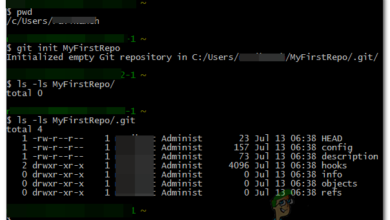Install Microsoft Office on Linux | A Step-By-Step Guide
Using PlayOnLinux to Install Office on Linux!
Microsoft Office is a Windows-Based program with limited support for Linux systems. Being a Linux user, it must be known that a Linux system cannot run Windows-based programs. However, Linux systems offer support of “Wine” to get Windows-specific programs, i.e., Microsoft Office, Visio, Sketchup, on your Linux system.
In today’s guide, we will list the easiest steps to install Microsoft Office on Linux.
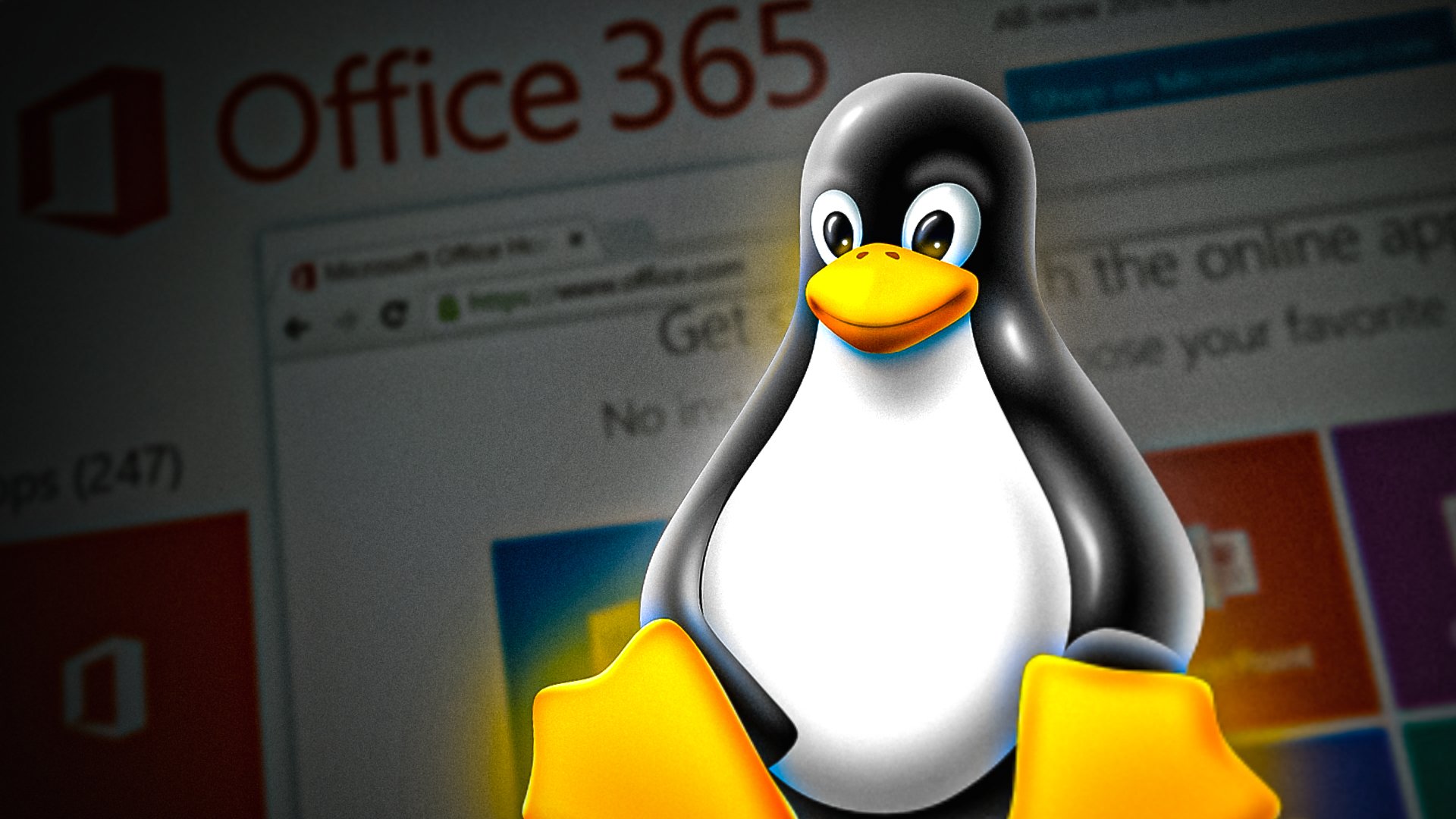
Prerequisites:
Before getting into the core part, let’s list down the prerequisites required to be installed on the system:
- PlayOnLinux: Front-end support of Wine (an emulator used to run Windows Applications on Linux).
$ sudo apt install playonlinux #For Debian/Ubuntu-based Distros $ sudo yum install playonlinux #For CentOS/RHEL $ sudo dnf install playonlinux #For Fedora/CentOS-8
- Winbind: Utility to accept Windows-based applications on the Linux system. Winbind can be installed on Linux as follows:
$ sudo apt install winbind #For Debian/Ubuntu-based Distros $ sudo yum install samba4-winbind #For CentOS/RHEL $ sudo dnf install samba-winbind-2 #For Fedora/CentOS-8
- Winetricks: A script that helps Wine to get additional features of Windows programs on Linux, i.e., fonts and updated libraries. Use the commands to install it on Linux:
$ sudo apt install winetricks #For Debian/Ubuntu-based Distros $ sudo yum install winetricks #For CentOS/RHEL $ sudo dnf install winetricks #For Fedora/CentOS-8
The last prerequisite is to keep the installation files of Microsoft Office ready. Either in a folder or burnt on CD.
How to Install Microsoft Office on Linux?
Once you are done with the prerequisites, get into the steps to install Microsoft Office on Linux:
Step 1: Launch PlayOnLinux
- Launch PlayOnLinux from the Applications Menu, or you can do this from the terminal:
$ playonlinux
- Now, click “Install a program”:

Install program
Step 2: Search Microsoft Office and Choose the Version
In the next wizard, do the following:
- Uncheck the “Testing” option to get only the stable/commercial releases.
- Search for “Microsoft Office”, which will list the available versions as shown below.
- Choose the appropriate version and click on “Install”.

Choose Office Version - Read the general instructions on PlayOnLinux and click on “Next”:

Agree by clicking Next - After that, a wizard showing the “Installation Directory” will appear click “Next”:

Select installation directory
Step 3: Choose the Setup File/Choose CD
- Next, you have to choose the setup file or the CD option as below. In our case, we have the setup file at the local computer’s location:

Select setup file - Click on “Browse” to choose the setup location:

Browse files in the computer - Choose the “.exe” file of the setup and proceed further:

Select setup file
Step 4: Configure Wine Essentials
- The setup file will be loaded, and click “Next” to move further:
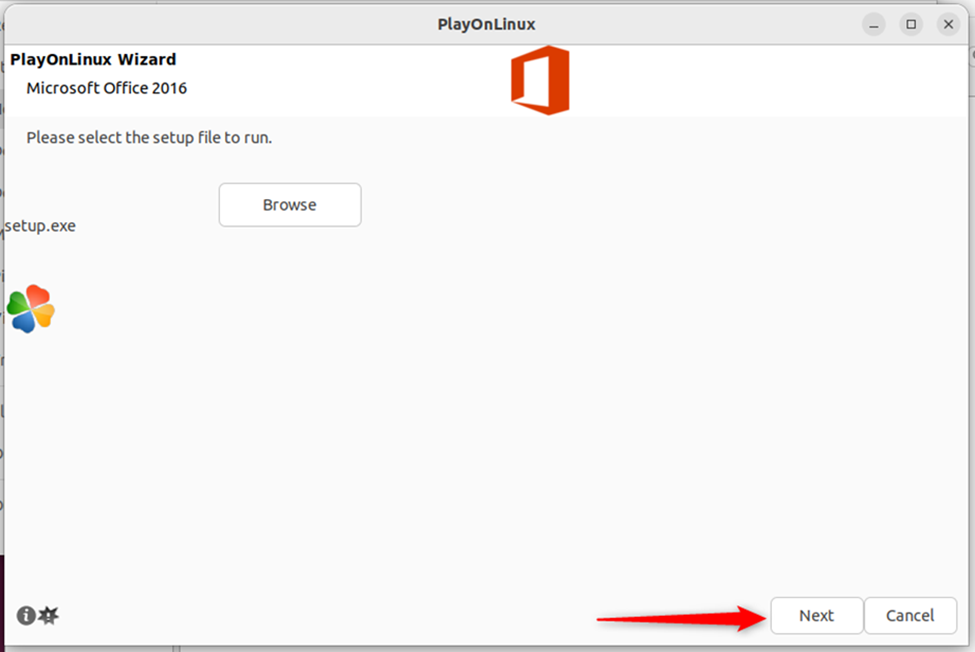
File loading - The essentials, i.e., the wine will be configured at the specific installation path:
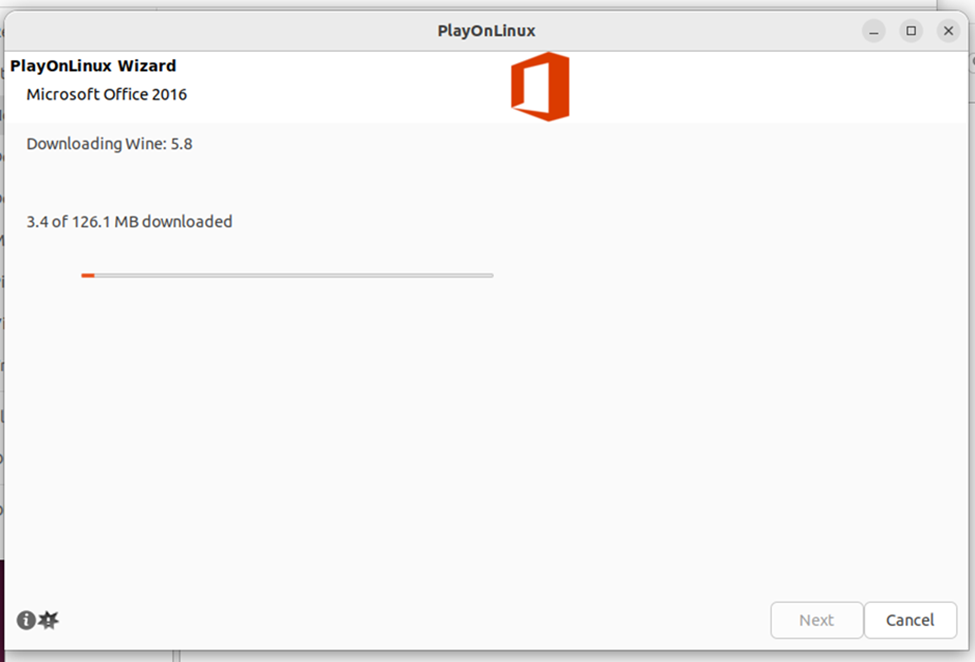
Downloading in process - Up next, a “wine mono” package will be installed (which is required to smooth the working of .NET applications):
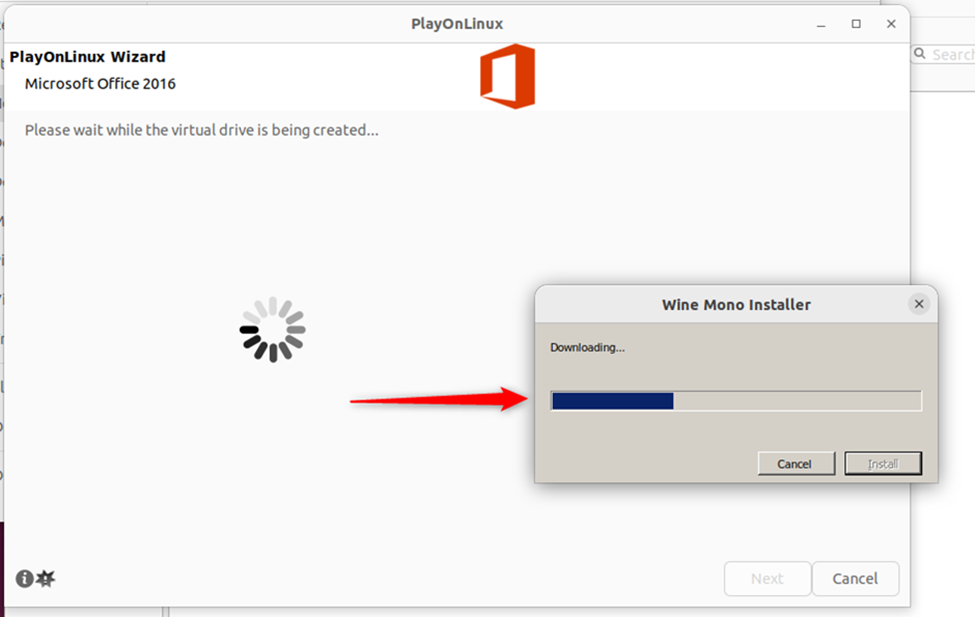
Downlading the wine mono installer - Next is “Wine Gecko Installer” (which assists in dealing with HTML content):
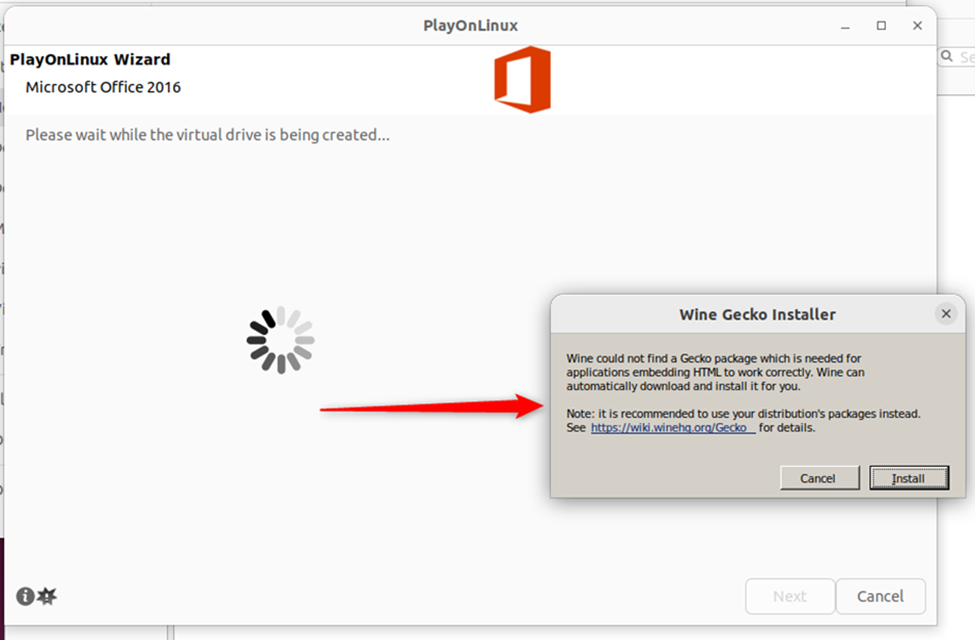
Click to install wine gecko - It will keep on installing the further essentials:

Installing essentials
Step 5: Install Wine
- Once done, the office setup wizard will appear as below:
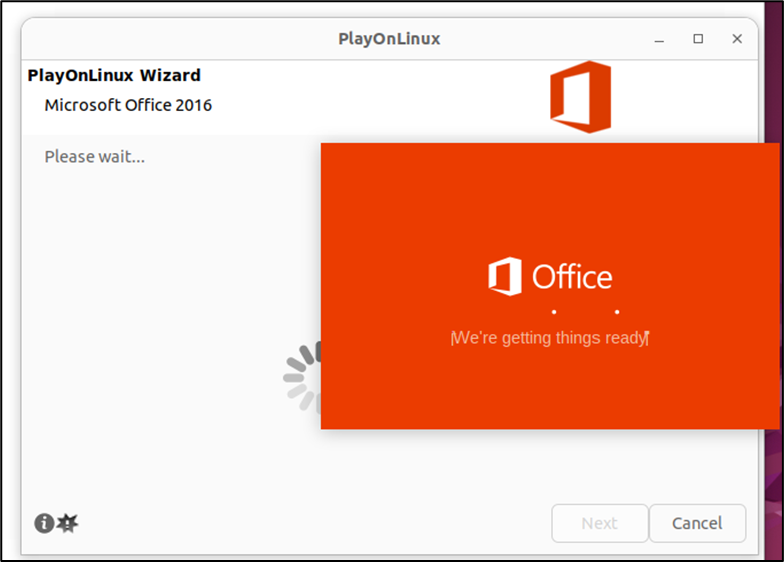
Office setting up - And the installation will be started automatically:
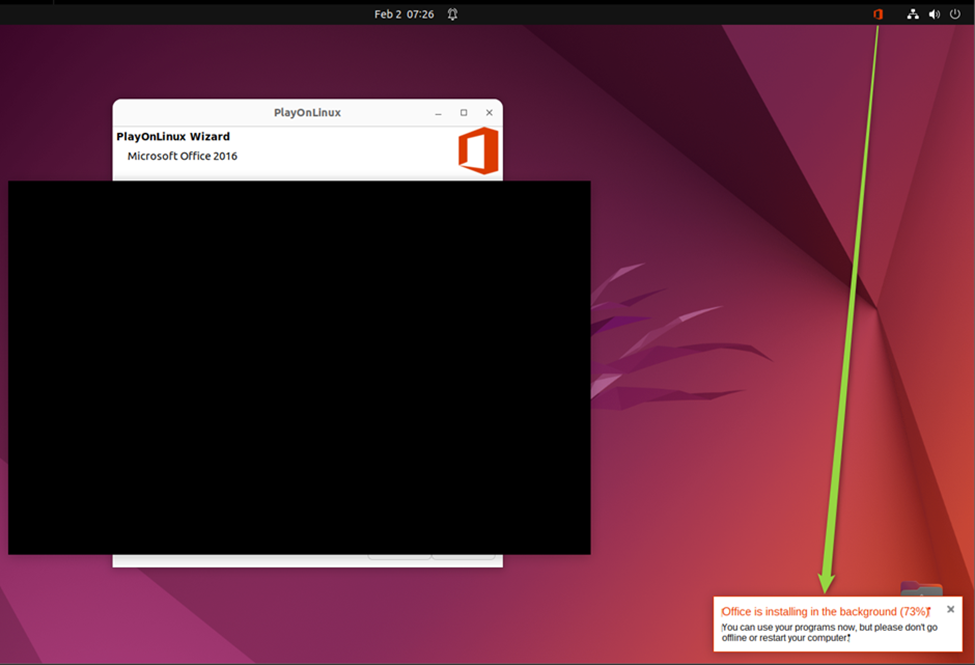
Auto installation in background - As soon as the installation is completed, the wizard will close and the Microsoft Office Word, PowerPoint, Excel, and all the apps will be listed on the PlayOnLinux:
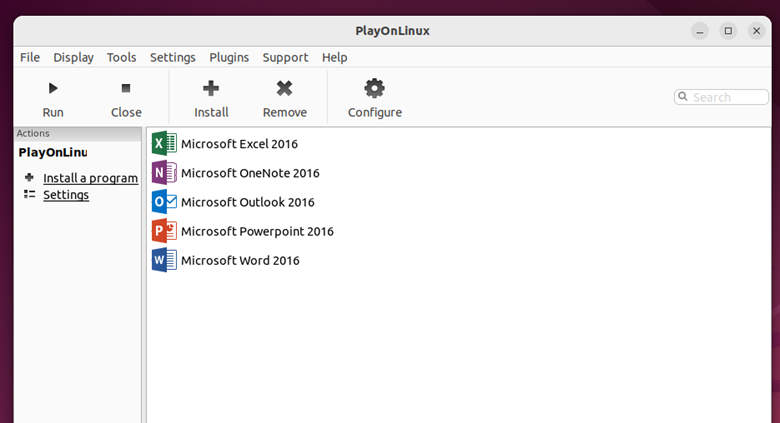
List of office products to be selected - You can also launch the applications by searching them in the applications menu of your system:

Search to launch Microsoft office products
Alternative Way to Use Microsoft Office on Linux
Although you have installed Microsoft Office on your Linux system by following the above method, it is not the latest. To use the latest Microsoft Office, i.e., 365, you can access it online.
Follow the steps to see how it works:
Step 1: Visit Office Website
- Go to the Link, and click on the Sign in:
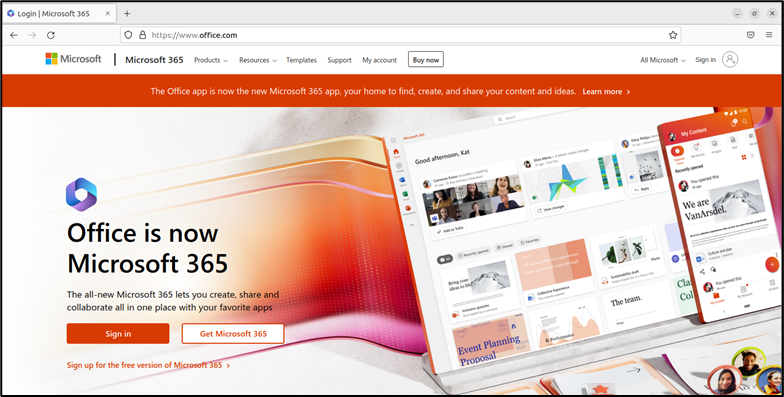
Microsoft official website
Step 2: Sign in or Sign up for Microsoft Account
- Enter your Microsoft email, and if you are new to Microsoft then choose the “Create one!” option:

Sign-in page - Then, enter your password and click on “Sign in”:
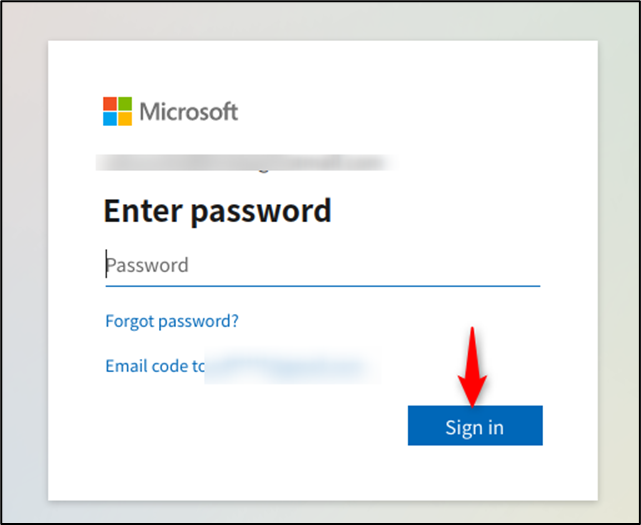
Enter password
Step 3: Use Microsoft Office
- After login, you will see a dock panel on the left side containing various Microsoft Office applications:
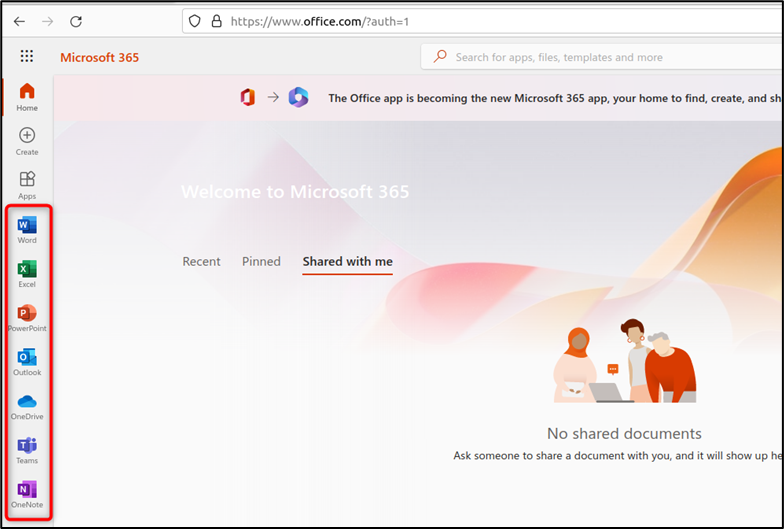
Office dock panel - Microsoft Word: Click on the Microsoft App icon, and you will get the same interface as in the offline version:

Microsoft word doc - A blank document in Microsoft Online version:
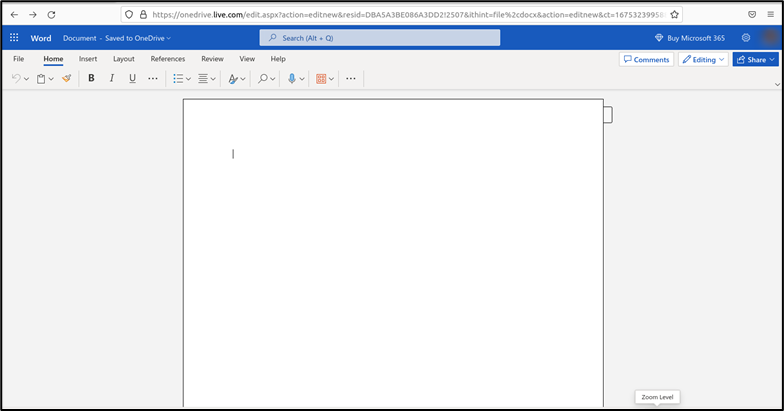
Blank Word Document
Similarly, you can use other office applications such as Microsoft Excel, PowerPoint, OneNote, Teams, and much more.
In Office365 online support, the documents are saved online by default. However, the users can download a copy in “.docx” format to use it locally.


